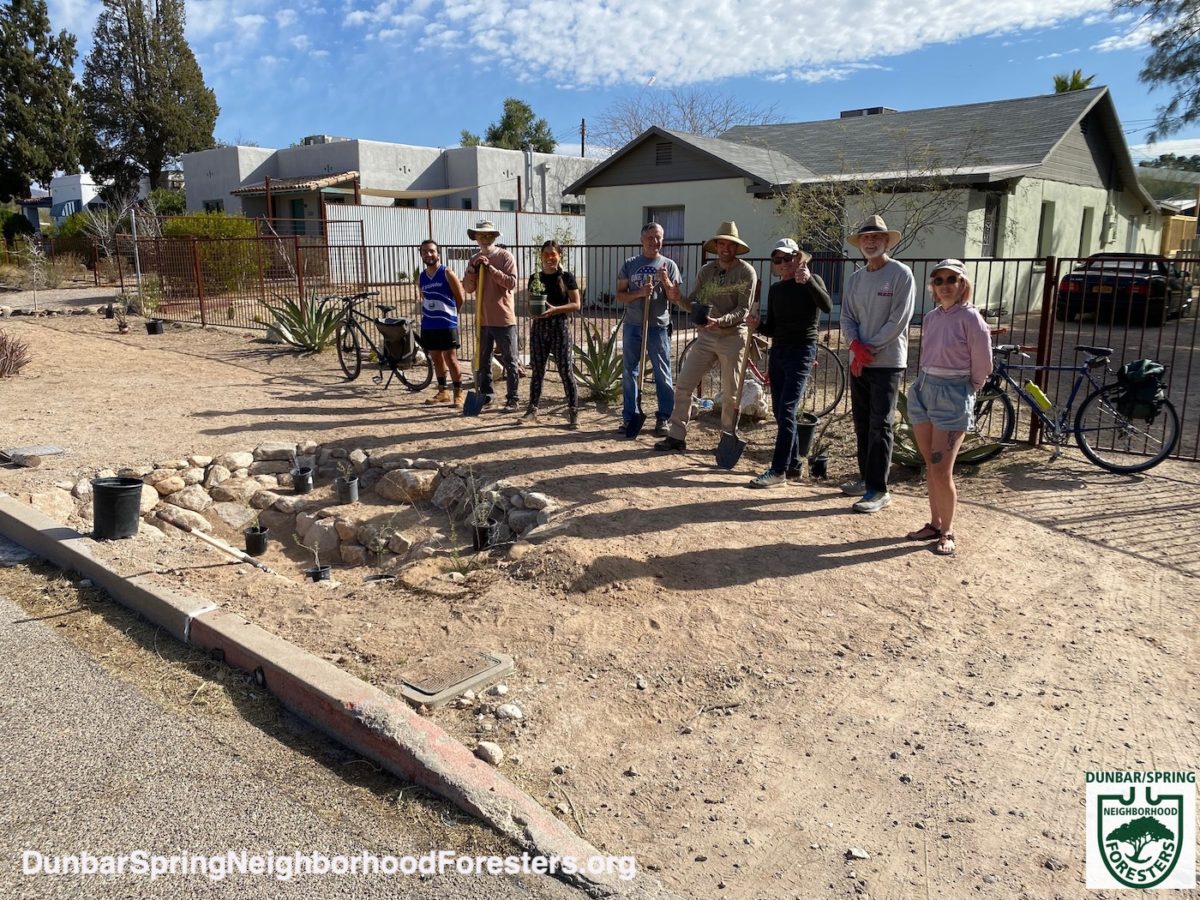Annual rain & native food forest plantings another success in 2022

(From Brad Lancaster and the Dunbar/Spring Neighborhood Foresters)
Our 26th annual Dunbar/Spring Neighborhood Rain, Tree, & Food Forest Planting extended into the adjoining West University Neighborhood for a third year here in Tucson, Arizona.
But as both neighborhoods are part of/share the same watershed, you could say we planted in just one waterhood.
In total, during our 2022 planting, we planted:
• Over 30,000 gallons of stormwater (that will be captured in the constructed earthworks in an average year of rain) per year. (This water used to wastefully drain out of the neighborhoods, creating downstream flooding).
• 29 native trees that will grow to full size (some of these were planted within rain gardens created in previous years where trees were mistakenly removed by outside “maintenance” crews).
• 4 bush trees (see here for an example)
• 85 native, multi-use understory plants
• Quarter pound of Wildlands Restoration’s Short Stuff native wildflower, groundcover, and grass seed mix; and Bosque del Bac Restoration seed mix, along with neighborhood-grown coyote gourd seed and datura seed.
Volunteers who helped plant:
22
Neighborhoods represented by the volunteers that helped plant:
5
Neighborhood blocks of public pedestrian paths cleared of gravel/rock, pruned, widened to five feet, and built up with dirt excavated from basins to get public path level with top of street curb—to regain full pedestrian access:
3
Four-inch diameter curb cores made to direct street runoff into street-side basins:
9
Existing driveway dips in street curb used as street-side basin inlets:
1
See the full article and more photos here: https://dunbarspringneighborhoodforesters.org/2022/04/annual-rain-nativ…
Dunbar Spring Neighborhood planting crew 3-2022. Plants (still in their pots) are placed where they will be planted (without pots) within the street-side stormwater-harvesting basin. Photo: Brad Lancaster
